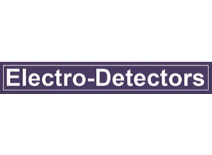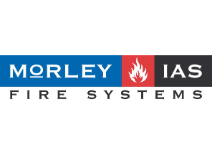Fire Guard Services
Fire Alarms
Fire alarms are required by law in most buildings, and their specific design and installation requirements are regulated by British Standards. Regular testing and maintenance of fire alarm systems are essential to ensure their reliability in an emergency.
Maintenance involves testing the various triggers and responses of the fire alarm system to ensure that they are working properly. This includes testing the response of the system to different types of fires and alarms.
Fire Alarm servicing and maintenance
Under the British Standards code of practice for fire alarms (BS 5839), fire alarms must be regularly maintained to ensure they are in good working order and can provide early detection in the event of a fire. Regular maintenance also ensures compliance with legal requirements and helps to minimise the risk of false alarms.
It is recommended that a fire alarm service be carried out every four to six months to ensure the system is functioning as it should. During a fire alarm service, a professional technician will conduct a thorough inspection of the system, including checking the sensors, control panel, and wiring.
We offer weekly and monthly fire alarm testing, as and when required. Our engineers can also provide training to help improve your knowledge of your fire alarm system; to help you better understand how to use it correctly.
Fire Alarm Systems - Which One is Most Suitable?
We offer a free consultation with one of our qualified fire alarm engineers throughout Bedfordshire, Buckinghamshire, Cambridgeshire, Essex, Hertfordshire, London, and Northamptonshire who will discuss the fire alarm system best suited to your company and needs.
We then handle everything for you, from the design stage through to fire alarm system installation, commissioning, hand-over, training and servicing.
Conventional
A fire safety system designed to detect and alert you of signs of fire within a premises. Fire detection devices are connected individually to conventional fire alarm panels systems using wiring. When a connected device detects smoke or heat, it sends a signal to the main control panel (which will show the “zone” or “area” where the fire has been detected) and sets the alarm off. These are most suitable for smaller buildings or low-risk establishments.
Addressable
A system made up of detectors and devices that are connected to a central control panel. Each device has a specific address or location. This ‘address’ identifies the exact location of the fire.
These are perfect for larger buildings, especially those spread over a wide area.
Wireless
As the name suggests, these devices have no wires – instead they utilise a secure wireless link. A signal is transmitted from manual call points, smoke and heat detectors to the fire alarm control panel to set off the alarm. These are most suitable for properties and establishments where wires and cables are difficult to connect.
We offer a free consultation with one of our qualified fire alarm engineers throughout Bedfordshire, Buckinghamshire, Cambridgeshire, Essex, Hertfordshire, London, and Northamptonshire who will discuss the fire alarm system best suited to your company and needs.
We then handle everything for you, from the design stage through to fire alarm system installation, commissioning, hand-over, training and servicing.
Contact us for a FREE consultation
Fire Alarm Maintenance
Fire Guard Services are able to install, service and maintain all makes and models of fire alarms. Our fire alarm installation partners include:












Your Fire Alarm Questions Answered
Fire alarms are an essential part of any fire safety system and must be tested regularly in order to comply with legal requirements and to ensure they are working correctly.
We also understand that business owners may have questions about fire alarms. That’s why we’ve created this short FAQ to answer some of your questions.
The regulations do not stipulate the type of alarms (such as mains powered ('hard wired') or battery powered) that should be installed.
For fire detection and alarm systems it is recommended a service by a competent provider is carried out every 6 months to comply with BS 5839-1 (the British Standard for fire detection and fire alarm systems for buildings in non-domestic premises).
Appropriate fire alarms are a legal requirement for every single business. It's not enough to simply install one though, by law, you've got to maintain and test it too.
